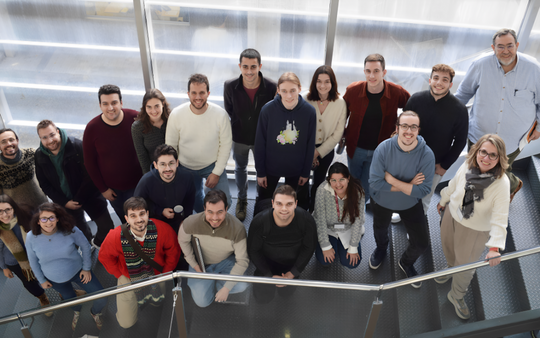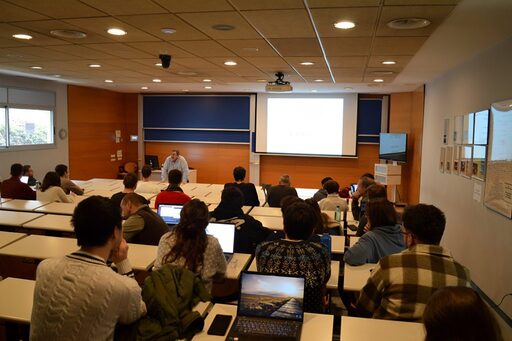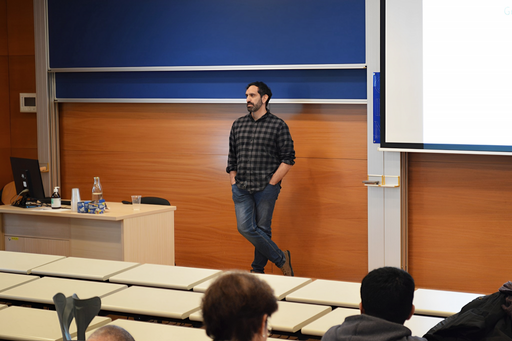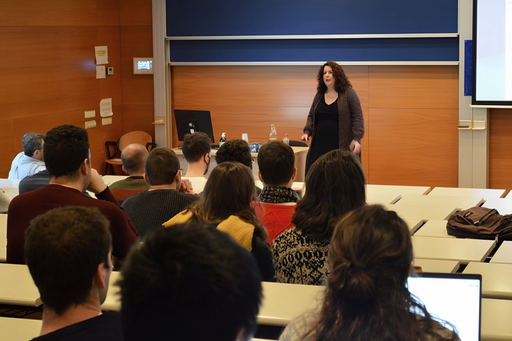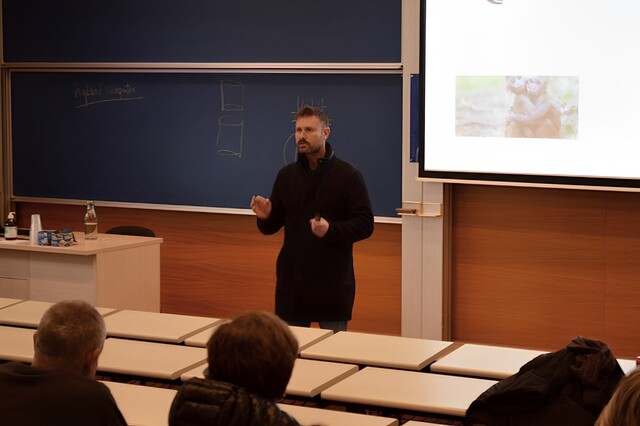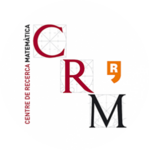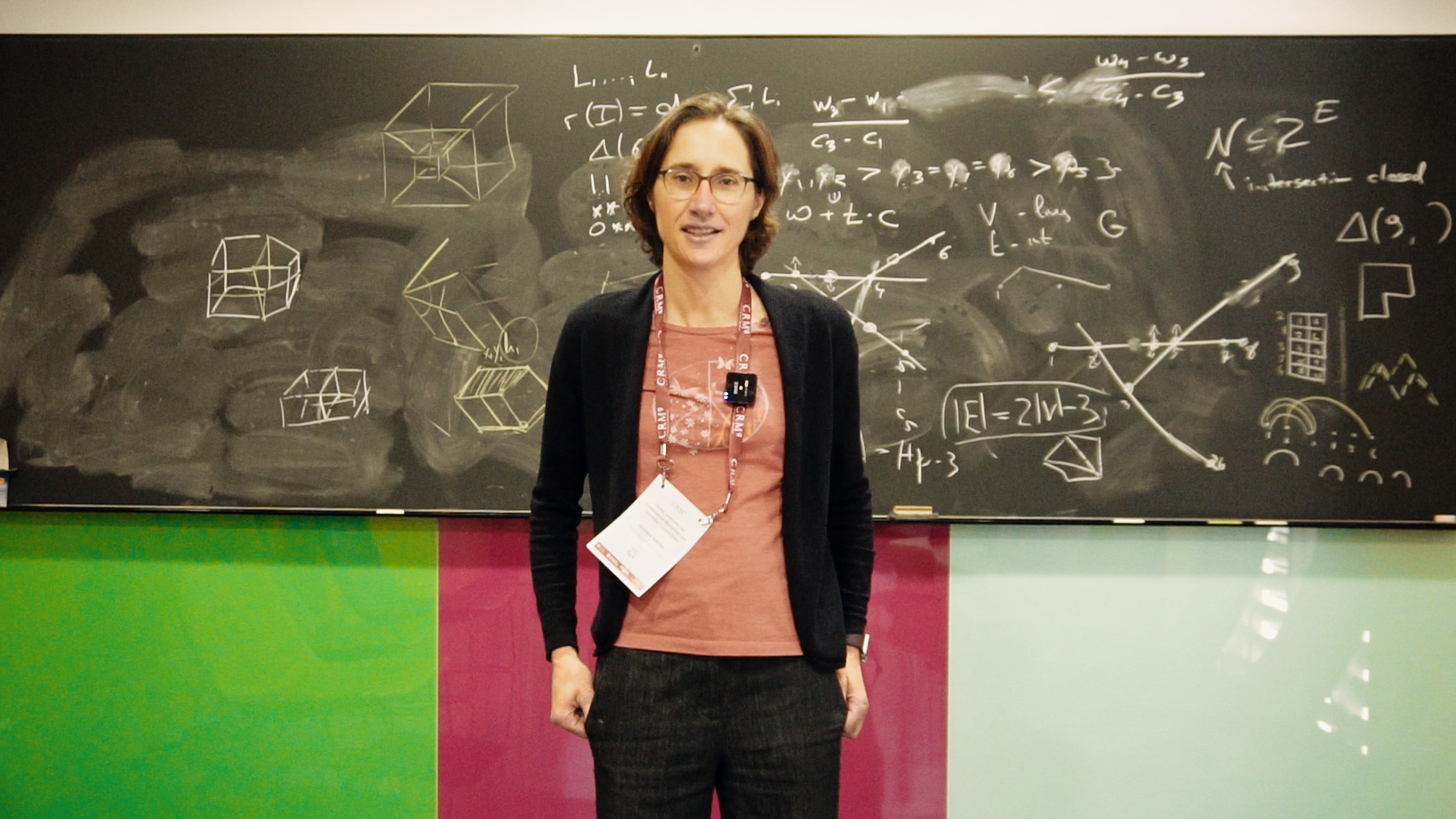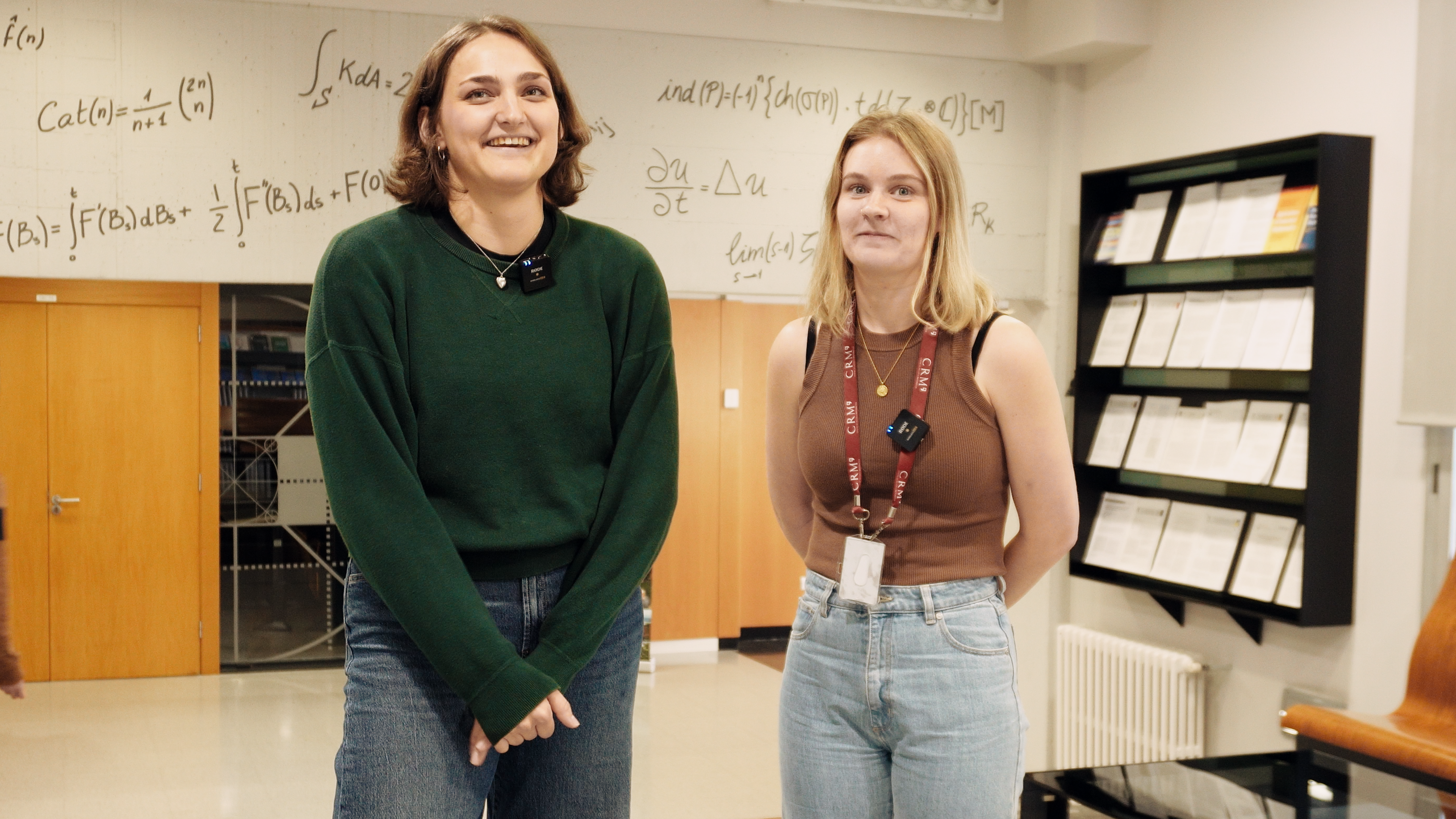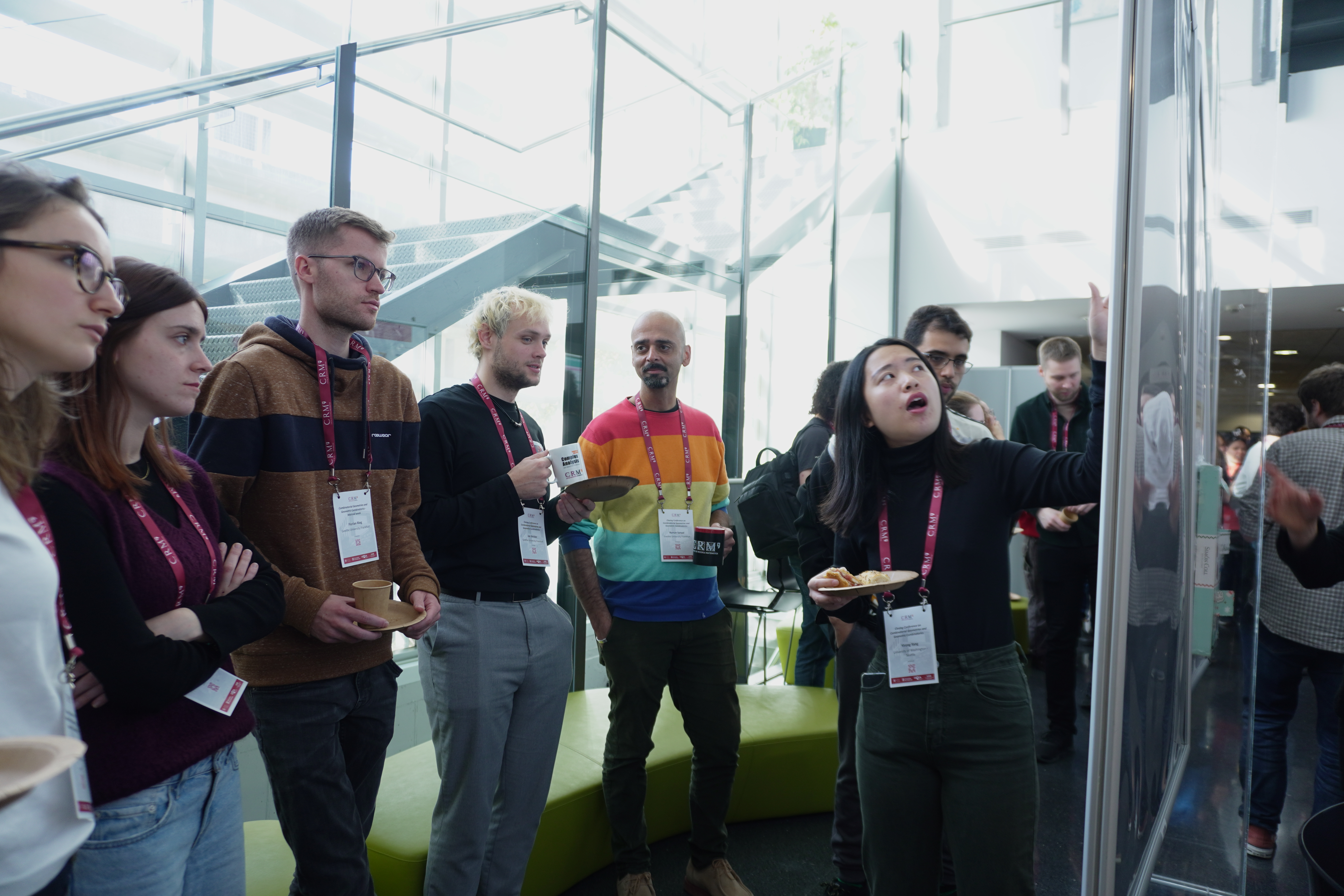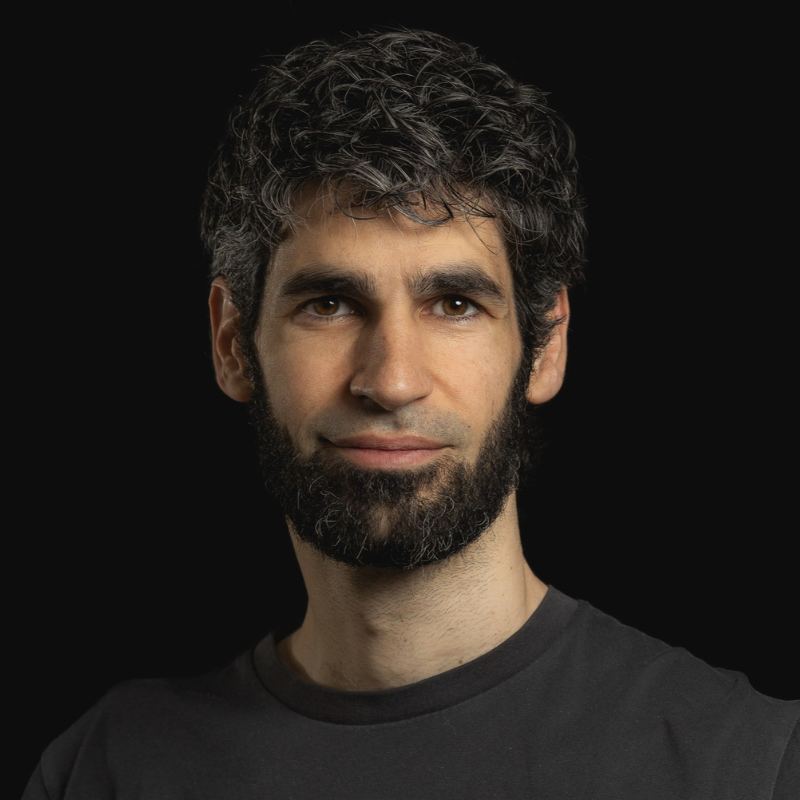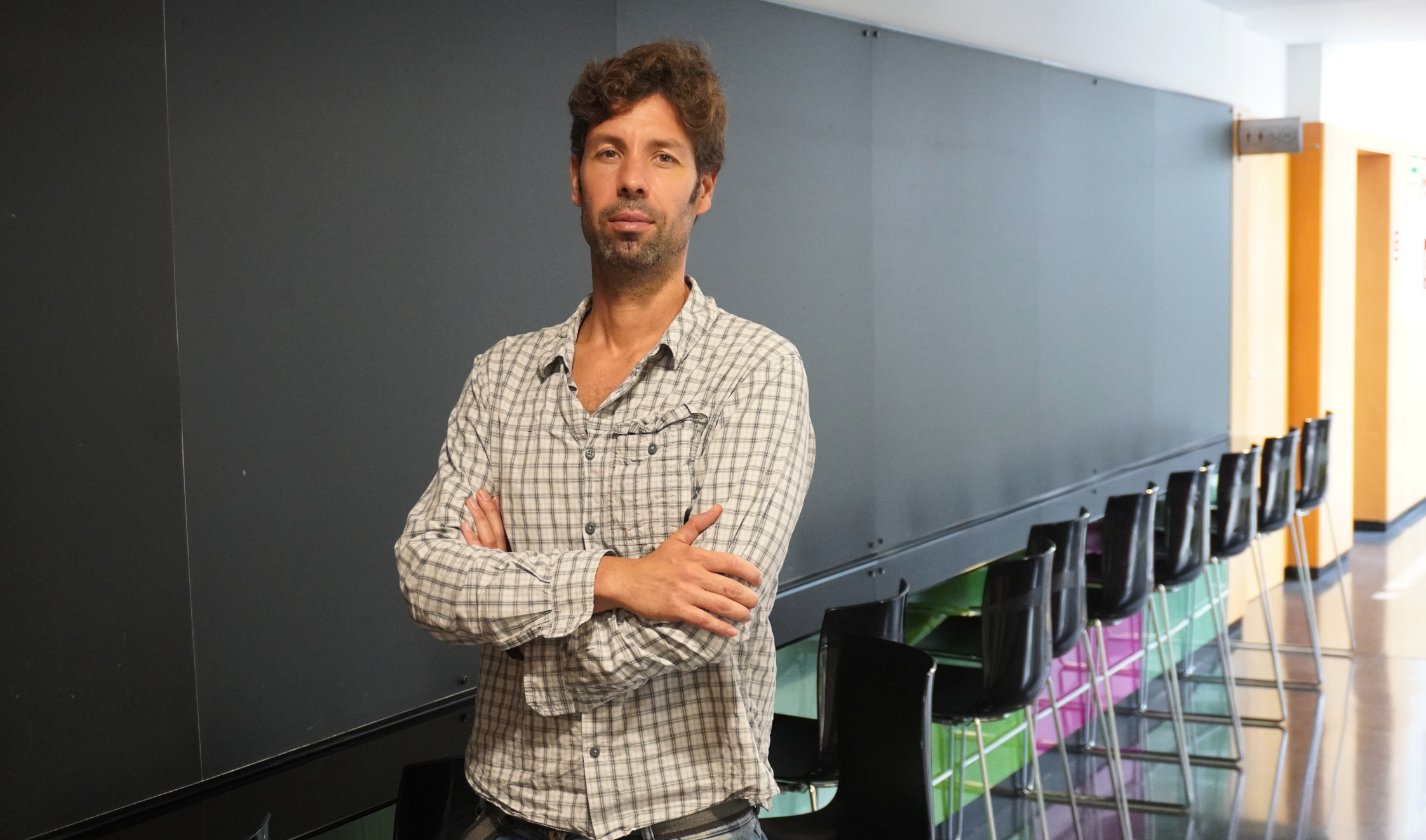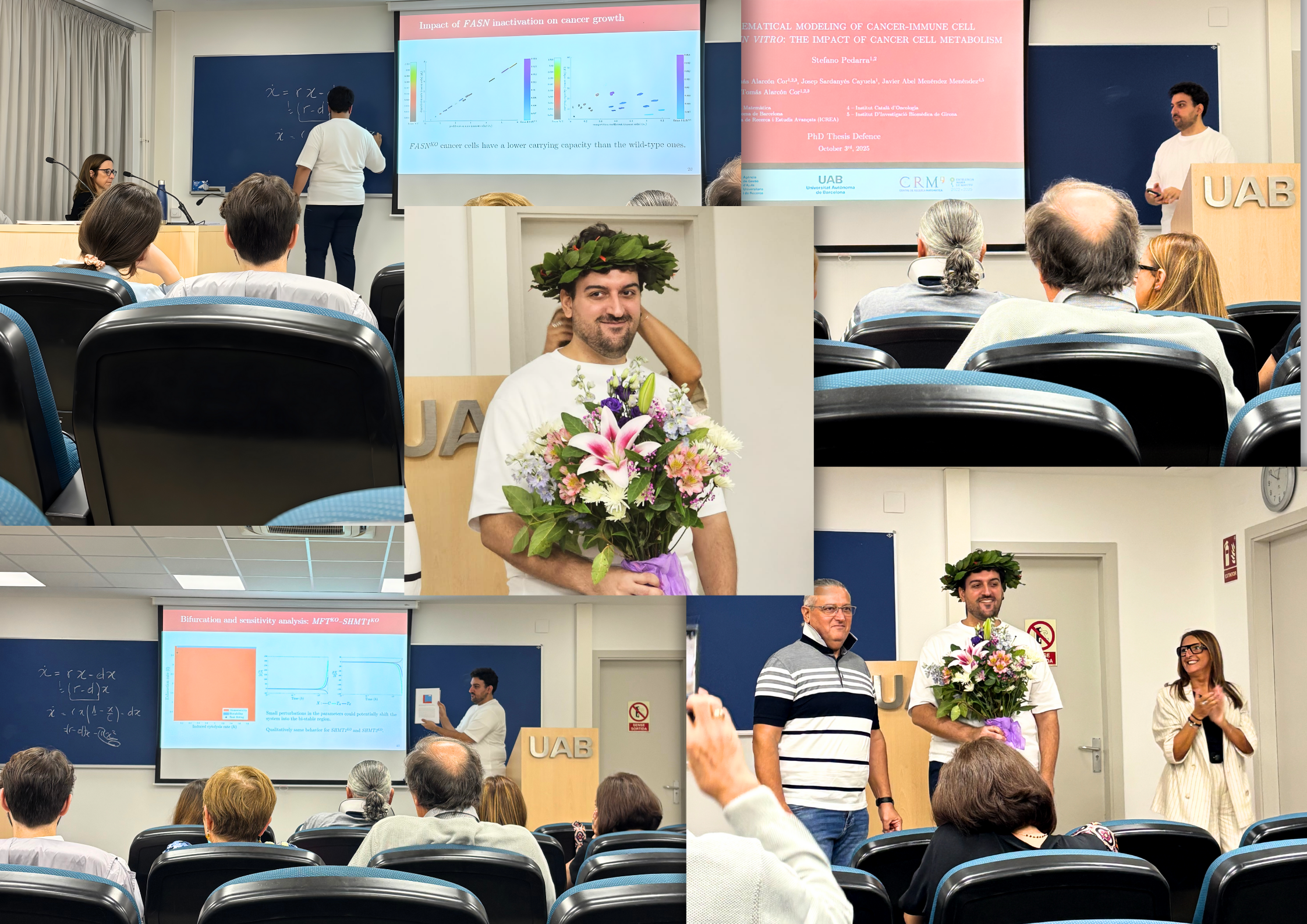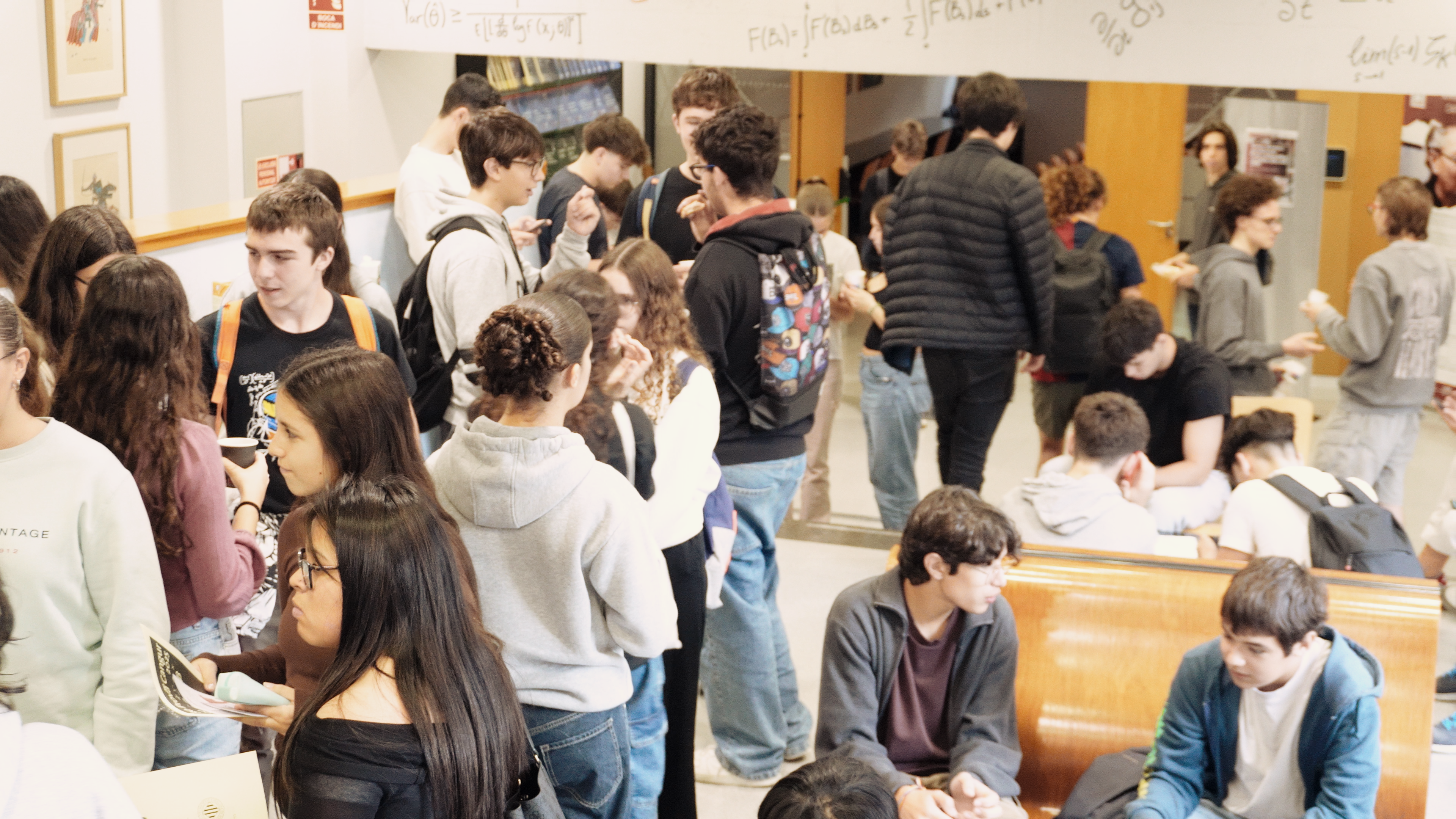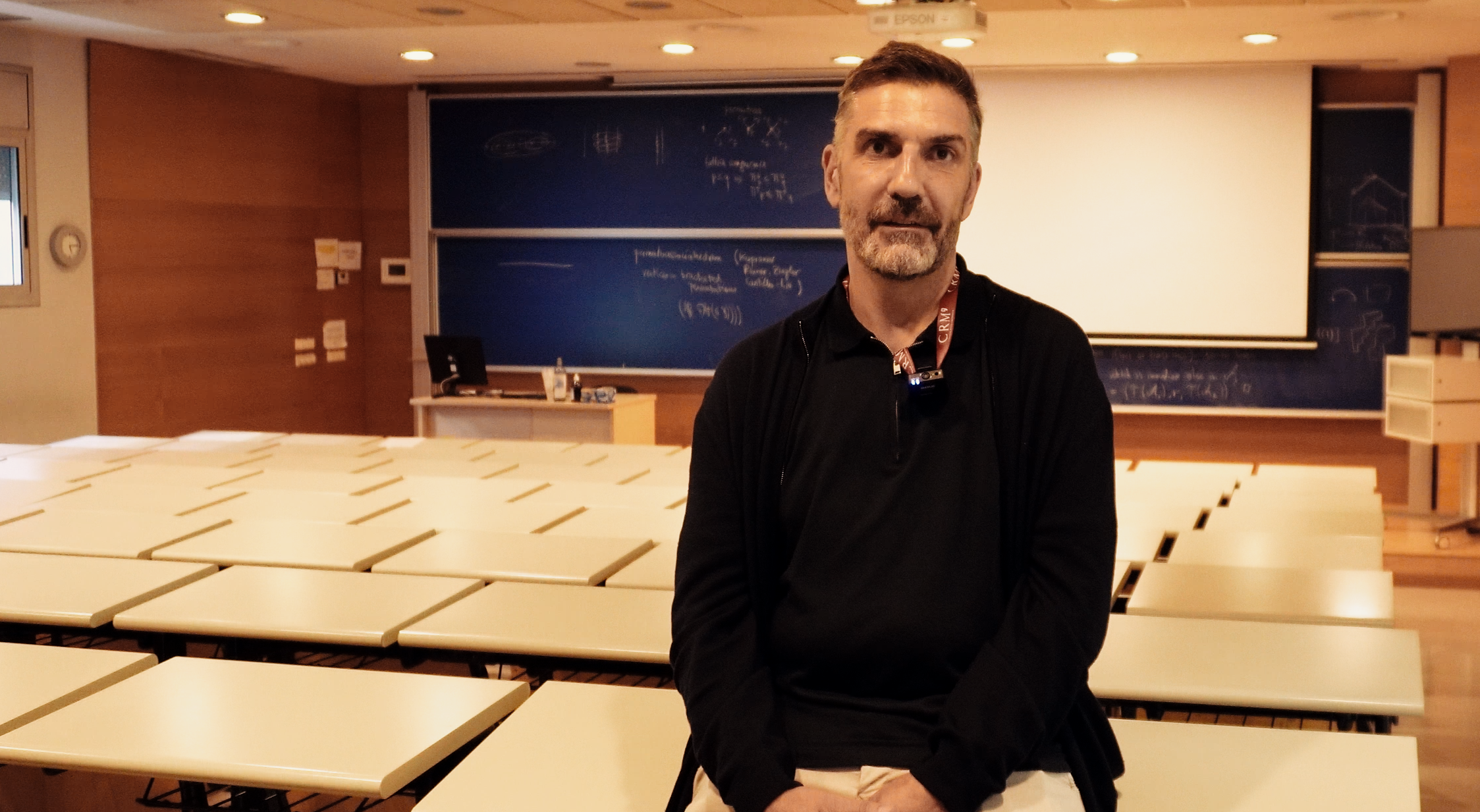Lluís Alsedà, the director of the CRM, commenced the welcome day by expressing his satisfaction with both the quantity and diversity of individuals present at the center.
“In research, while individual contributions are fundamental, collective governance is equally essential. The feedback I receive assures me that we are on the right trajectory.”
The philosophy underlying the María de Maeztu award is not a project itself but rather a recognition aimed at enhancing research centers. Consequently, it is imperative to foster collaboration among different research groups from various institutions, as working independently is not persuasive to stakeholders and evaluators. To this end, a process of affiliations has been initiated to facilitate visualization and promote collaboration.
It is crucial to recognize that projects serve as a means rather than an end in themselves. The path forward entails executing tasks meticulously and adhering to high standards.
A brief presentation on the new incorporations in 2023 of the CRM followed his talk.
David Romero: “Mathematics in motion: Fostering Societal Impact through Knowledge Transfer”
Romero, head of the KTU, began the discussion at CRM by emphasizing a core aspect of the center’s mission: transferring research and methodologies to have a real impact on society, a principle enshrined in its statutes. Collaboration is key at CRM, as it partners with various research institutions, the private sector, institutions, SMEs, and industries to serve the broader community. The key word Romero used, was that KTU was based on the dialogue between society and investigation.
The Knowledge Transfer Unit (KTU) plays a vital role in this collaborative effort, acting as a bridge between CRM and external entities to foster partnerships. The KTU’s objectives include bringing CRM’s research and expertise back into society and addressing societal challenges by leveraging mathematical tools and expertise.
However, transferring mathematical concepts presents unique challenges due to their abstract nature and specialization, as Romero explained during the discussion. Nonetheless, situated within CRM, the KTU utilizes mathematical expertise to apply mathematics, take advantage of CRM’s position as a mathematical hub, and provide training opportunities.
Recent projects have covered a range of topics, from cybersecurity and data compression algorithms to pharmacological modeling, cooking steaks and microplastics analysis, reflecting CRM’s impact across various sectors. KENIA program allows enterprises to implement best practices in mathematics and programming.
One notable project arose from Transports de Barcelona, S.A (TB), seeking to enhance its Bus de Barri (BB) service by exploring the transition from fixed lines to a Demand-Responsive Transport (DRT) model. The challenge involved defining optimal and feasible routes while ensuring a smooth transition for existing users. The outcome improved mobility for TB’s service and garnered recognition at events such as the Transportation Research Board Annual Meeting. Additionally, CRM’s involvement in projects like Horizon Europe project EBRT2030 highlights its ongoing commitment to shaping transportation’s future.
In a promising development, new outcomes are emerging, including optimizing freight distribution and the study of gulls’ behavior as a Google Maps -in association with Institut de Ciències del Mar-, demonstrating CRM’s role in driving innovation and societal progress through mathematics.
Dr. Eva Miranda’s talk: “Paths that close… or not”
Eva Miranda‘s presentation began with the Seifert conjecture (1950), which initially suggested that a continuous vector field on the 3-sphere must contain a closed orbit. However, subsequent counterexamples, like Harrison’s \(C^2\) counterexample in 1988, challenged this notion. Miranda then provided a brief overview of symplectic and contact geometries to set the stage for the discussion.
She transitioned to an interesting anecdote about the “friendly floaters” – rubber ducks lost from the Ever Laurel carrier in 1992, with one resurfacing unexpectedly in Scotland in 2007. This led to a reflection on the unpredictable and complex behavior of fluids, such as lava and water.
The core question of Miranda’s talk revolved around whether fluids are complicated enough to perform computations and simulate Turing machines. A Turing machine is a mathematical model of computation describing an abstract machine that manipulates symbols according to a table of rules; it can be thought as a “printer” of a states in a long tape, and when it reaches the “halting” state” -the program stops-, it stops printing. Drawing from Turing’s work in 1936 on the undecidability of the Halting problem, Miranda posed the idea of associating Turing machines or supercomputers with the trajectories of rubber ducks, highlighting the connection between computational theory and fluid dynamics.
She introduced Moore’s paradigm shift, which generalized the concept of shift in dynamical systems, demonstrating their ability to simulate Turing machines, thus introducing a form of logical chaos. This raised the question of how one could link a Turing machine with a dynamical system, which Miranda explained by equating the halting of a Turing machine with a specific trajectory of a field entering an open set in M.
A significant breakthrough came in 2020 when Cardona, Peralta, Miranda, and Presas (Constructing Turing complete Euler flows in dimension 3, PNAS, 2021) demonstrated the existence of stationary Euler flows in dimension 3 that are Turing complete, representing a milestone in fluid computation.
In conclusion, Miranda highlighted the existence of undecidable fluid paths, underscoring the lack of algorithms capable of determining whether a trajectory will enter an open set. This solidified the concept of a fluid computer à la Feynman, paving the way for advancements in computational fluid dynamics.
Dr. Alex Roxin’s talk: “The formation and long-term dynamics of memory in the hippocampus”
Alex Roxin discussed the dynamics of memory formed in the hippocampus and candidate mechanisms for episodic memory to optimize the storage of information in neurons through synaptic plasticity and its association with learning.
Synaptic plasticity is the ability of neurons to modify the strength of their connections; it is a neurophysiological process involved in brain network development and reorganization after damage. Altogether with Ye Lin (Ye Li and Roxin, PLoS Comp Biol 2023), they experimentally discovered a rule that allows for optimal storage of information in neurons. When looking for a mechanism to optimize learning in our daily life, and specifically, episodic memory (which involves the ability to learn, store, and retrieve information that occurs in daily life that is formed after a single exposure to novel stimuli), this new model looks like a good candidate mechanism for it.
This new mechanism, a recently discovered form of in-vivo plasticity called Behavioral Time-scale Plasticity (BTSP), leads to the generation of a place cell in CA1 from a previously silent cell after a single intracellular plateau potential (PP). They show that this one-shot learning process is well-described by a one-dimensional map, which updates the synaptic weight matrix after the PP. The map allows us to calculate the correlation of the weight matrix with all past explored environments analytically. When only a small fraction of cells are place cells in any given environment, we show that the full dynamics of a recurrent network endowed with BTSP is equivalent to its projection onto a series of weakly interacting manifolds, one for each environment, which can be represented by ring models. Interestingly, this weak interaction, actually enhances the memory capacity by stabilizing remote memories which otherwise would be unretrievable.
Subscribe for more CRM News
|
|
CRM CommPau Varela & Mariona Fucho
|
From Barcelona to West Bengal: Chemistry Meets Mathematics to Enhance Water Filter Design
Researchers at the Centre de Recerca Matemàtica, in collaboration with IIT Kharagpur and UPC, have developed a mathematical model that accurately predicts the performance of fluoride-removal water filters made of mineral-rich carbon (MRC) and...
Polytopes, Matroids, and the Friends You Make: Martina Juhnke on Two Months at the CRM
The Centre de Recerca Matemàtica recently hosted a research programme on Combinatorial Geometries and Geometric Combinatorics, focusing on the overlap between polytopes and matroids. Martina Juhnke, a member of the scientific committee, reflects on how this programme...
BAMB! 2025: Participants Return to the CRM for Research Stays
In October 2025, the Centre de Recerca Matemàtica hosted Josefine Meyer (ISTA) and Cate MacColl (University of Queensland) for a month-long research stay following their participation in the BAMB! Summer School. Despite studying vastly different subjects, from...
Connecting Shapes, Patterns, and Ideas: the Closing Conference on Combinatorial Geometries and Geometric Combinatorics
During five days, the CRM hosted the Closing Conference of the MDM Focused Research Programme on Combinatorial Geometries & Geometric Combinatorics. The event featured plenary talks, contributed sessions, and posters on topics from matroids and polytopes to...
Xavier Ros-Oton among the 65 most cited mathematicians in the world
ICREA professor at the Universitat de Barcelona and CRM affiliated researcher Xavier Ros-Oton appears on Clarivate's Highly Cited Researchers 2025 list, which this year reinstates the mathematics category after two years of exclusion.Citations are a strange way to...
New Horizons for H- and Γ-convergence: From Local to Nonlocal (and viceversa)
The researchers Maicol Caponi, Alessandro Carbotti, and Alberto Maione extended the H- and Γ-convergence theories to the setting of nonlocal linear operators and their corresponding energies. The authors were able to overcome the limitations of classical localization...
Diego Vidaurre joins the CRM through the ATRAE talent programme
Diego Vidaurre has joined the Centre de Recerca Matemàtica through the ATRAE programme, bringing his expertise in modelling spontaneous brain activity across multiple data modalities. His work focuses on understanding how the brain’s intrinsic dynamics shape...
El CRM a la Setmana de la Ciència: una ruta entre dones, formes i pensament
El CRM va participar en la 30a edició de la Setmana de la Ciència amb una ruta guiada que va combinar les biografies de dones matemàtiques amb obres d'art del centre, connectant ciència, història i creació artística.El 12 de novembre, el Centre de Recerca Matemàtica...
Stefano Pedarra Defends his PhD Thesis on the Interaction between Tumour Cells and the Immune System
Stefano Pedarra has completed his PhD at the Centre de Recerca Matemàtica with a thesis exploring how tumour-cell metabolism shapes the immune system’s ability to fight cancer. His work brought mathematics and biology into direct conversation, from building models to...
Els estudiants participants a la prova de preselecció de Bojos per les Matemàtiques visiten el CRM
La prova de preselecció de Bojos per les Matemàtiques va reunir estudiants de tot Catalunya a la UAB i al CRM, amb presentacions a càrrec de Montse Alsina, presidenta de la Societat Catalana de Matemàtiques, Núria Fagella, degana de la Facultat de Matemàtiques i...
Jordi Mompart highlights the role of artificial intelligence in sport at the XIII GEFENOL-DIFENSC Summer School
The XIII GEFENOL-DIFENSC Summer School gathered over thirty researchers from across Europe to explore how statistical physics helps explain complex phenomena in biology, ecology, networks, and social systems. In his closing lecture, Jordi Mompart (UAB) examined how...
Critical Slowing Down in Genetic Systems: The Impact of Bifurcation Proximity and Noise
An international collaboration including researchers from the Centre de Recerca Matemàtica (CRM) has shown that when several bifurcations occur close to one another, their interaction can dramatically amplify critical slowing down effect - the progressive slowdown of...
Pleateau Potential: sustained depolarization of a neuron’s membrane potential, typically lasting for hundreds of milliseconds to seconds
Symplectic geometry deals with symplectic manifolds, which are smooth manifolds equipped with a closed nondegenerate differential 2-form, known as the symplectic form. Mathematically, a symplectic form on a manifold M is a closed 2-form ω that is nondegenerate, meaning that for any point p in M, the 2-form ω_p is nondegenerate. A differential 2-form can be thought of as measuring an infinitesimal oriented area, or 2-dimensional oriented density, meaning it can be integrated over 2-dimensional surfaces.
Contact geometry studies contact manifolds, which are odd-dimensional manifolds equipped with a maximally nondegenerate field of tangent hyperplanes, called the contact structure. A contact structure is defined by a globally defined 1-form α that is nondegenerate, meaning that α∧(dα)^n is a volume form on the manifold, where n is the dimension of the manifold. The contact structure α on a manifold M satisfies α∧(dα)^n≠0, where n is the dimension of M. Geometrically, this means that at each point on the manifold, there is a unique hyperplane (the kernel of α) that is tangent to the manifold.
Place cells: pyramidal cells in the hyppocampus that bece active when an animal enters a specific enironment (place field), they act as a cognitive representation of a specific location in space.
In-vitro plasticity: the ability of the brain to change its structure and function in response to experiences and environmental stimuli while the organism is alive

